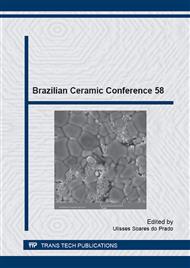p.492
p.497
p.503
p.509
p.515
p.520
p.526
p.535
p.539
Pozzolanic Activity of Wastes from Fired Clay Ceramic Industry for Incorporation into Concrete
Abstract:
The fired-clay ceramic industry generates relatively large amount of wastes mainly bottom ashes remaining in the firing furnaces and broken pieces, known as grog, from inappropriate products. These wastes, if inadequately disposed, may cause pollution associated with environmental degradation as well as health hazards. A viable solution for these wastes is their incorporation in concrete for civil construction, as long as they have pozzolanic activity. Therefore the present work evaluated the pozzolanic activity of three different types of wastes generated at the same ceramic industry. These wastes were a furnace remaining bottom ash from burning wood log, a similar ash from sawdust burning and a grog powder from higher firing temperature broken ceramics. The pozzolanic activity was measured by the electrical conductivity variation method. The results showed that both ashes are not provided with pozzolanic activity while the grog has a moderate activity.
Info:
Periodical:
Pages:
515-519
Citation:
Online since:
June 2015
Keywords:
Price:
Сopyright:
© 2015 Trans Tech Publications Ltd. All Rights Reserved
Share:
Citation:


